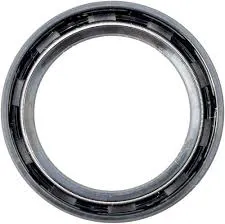10 月 . 14, 2024 04:44 Back to list
Understanding the Function and Application of Oil Seal Rubber in Various Industries
Understanding Oil Seal Rubber The Unsung Hero of Mechanical Systems
In the complex world of machinery and engines, components often work tirelessly to ensure optimal performance. Among these components, oil seals made from rubber play a vital yet often overlooked role. Oil seal rubber is not just any material; it is specifically engineered to withstand extreme environments, providing essential protection against leaks and contaminants, thereby ensuring the longevity and efficiency of mechanical systems.
What is Oil Seal Rubber?
Oil seal rubber is a specialized elastomer used in the manufacturing of oil seals. Oil seals function as mechanical barriers that prevent the leakage of lubricants from rotating shafts and protect internal components from external impurities. These seals are crucial in various applications, including automotive engines, hydraulic systems, and industrial machinery.
The primary compositions of oil seal rubber include synthetic rubbers like nitrile rubber (NBR), fluoroelastomer (FKM), and silicone rubber. Each type offers unique properties tailored to specific conditions. For instance, NBR is known for its excellent resistance to petroleum-based oils and fuels, making it the most common choice for oil seals in automotive use. On the other hand, FKM provides superior performance in high-temperature environments and is often used in aerospace applications, while silicone rubber is favored for its flexibility and resilience in extreme temperature variations.
Key Features of Oil Seal Rubber
1. Chemical Resistance One of the standout characteristics of oil seal rubber is its ability to resist degradation from oils, fuels, and various chemicals. This resistance is vital in maintaining the integrity of the machinery and preventing costly leaks.
2. Temperature Tolerance Oil seal rubber is designed to withstand a broad range of temperatures, from sub-zero conditions to high heat environments, ensuring consistent performance without compromising structural integrity.
oil seal rubber

4. Versatility Given its diverse range of formulations and hardness levels, oil seal rubber can be tailored to suit specific mechanical requirements, making it suitable for countless applications in various industries.
The Role of Oil Seals in Machinery
Oil seals are critical components in numerous applications. In automotive engines, for instance, they prevent oil from leaking out and contaminants from entering the engine, which can lead to premature wear and failure. For hydraulic systems, oil seals ensure that hydraulic fluid remains contained under pressure, allowing for efficient operation and reducing the risk of catastrophic failures.
Moreover, in the food processing and pharmaceutical industries, where cleanliness and hygiene are paramount, oil seals made from specific rubber materials can prevent contamination, thus upholding safety standards.
Choosing the Right Oil Seal Rubber
Selecting the appropriate oil seal rubber is crucial for ensuring optimal performance in specific applications. Factors such as operating temperature, exposure to chemicals, and the type of fluid being sealed must all be taken into account. For example, if an application involves high temperatures and aggressive chemicals, a fluoroelastomer might be the best choice.
Additionally, it is essential to consider the design and size of the oil seal. Various shapes and dimensions are available to fit different shafts and housing configurations, ensuring a proper seal that minimizes wear and leaks.
Conclusion
Oil seal rubber silently plays a pivotal role in the mechanical world, ensuring that vehicles and machines operate efficiently and reliably. Understanding its properties and applications can help engineers and technicians make informed decisions when it comes to maintenance, design, and replacement. As technology evolves, so too will the formulations and capabilities of oil seal rubber, continuing to serve as a cornerstone of mechanical integrity in countless applications. Thus, recognizing the importance of these humble seals is essential for anyone involved in the engineering and machinery domains, ultimately leading to enhanced performance and longevity of equipment.